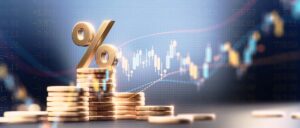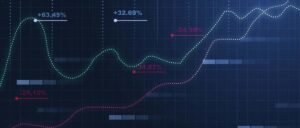By Paul D. Kaplan, Director of Research for Morningstar Canada
The circumstances of the current market crash might be unique to the coronavirus pandemic, but they lead investors to wonder: Are such drops normal for equity markets, or is this different?
During the global financial crisis of 2007–09, some observers described the events that unfolded as a “black swan,” meaning a unique negative event that couldn’t be foreseen because nothing similar had happened before. But the data I’d seen from Ibbotson Associates, a firm that specialized in collecting historical market returns (and which Morningstar acquired in 2006 and merged into Morningstar Investment Management LLC in 2016), demonstrated a long history of market crashes. Some ended up being part of a larger financial crisis.
So, if these ‘black swan events’ happen somewhat regularly—too frequently to render them true black swan events—then what are they? They’re more like “black turkeys,” according to Laurence B. Siegel, the first employee of Ibbotson Associates and now director of research for the CFA Institute Research Foundation. In a 2010 article for the Financial Analysts Journal, he described a black turkey as “an event that is everywhere in the data—it happens all the time—but to which one is willfully blind.”
Here, I take a look at past market declines to see how the current coronavirus-caused market crisis compares.
How Frequent Are Market Crashes?
The overall number of market crashes depends on how far back we go in history and how we identify them.
In this case, I consider market crashes over the past nearly 150 years. The chart below uses real monthly U.S. stock market returns going back to January 1886 and annual returns over the period 1871–85, which I originally compiled for Siegel’s 2009 book, Insights into the Global Financial Crisis. Here, I use the term ‘bear market’ (generally defined as a decline of 20% or more) interchangeably with the term “market crash.”
Each bear-market episode is indicated with a horizontal line, which starts at the episode’s peak cumulative value and ends when the cumulative value recovers to the previous peak.

The chart shows that over this period of almost 150 years, $1 (in 1870 U.S. dollars) invested in a hypothetical U.S. stock market index in 1871 would have grown to $15,303 by the end of March 2020.
But it wasn’t a smooth ride to get there. There were many drops along the way, some of which were severe.
The market always eventually rebounded and went on to new highs, but it may have been hard to believe this during some of the long-term bear markets, including:
- The 79% loss due to the crash of 1929, which led to the Great Depression, the worst drop on the chart.
- The 54% drop from August 2000 to February 2009, also known as the Lost Decade. The second-worst drop on the chart, this period started when the dot-com bubble burst. The market began recovering but not enough to get the cumulative value back to its August 2000 level before the crash of 2007-09. It didn’t reach that level until May 2013—almost 12 and a half years after the initial crash.
- The 51% drop between June 1911 and December 1920. This market downturn, the fourth-worst on the chart, may be most relevant to today’s situation, since it included the influenza pandemic of 1918.
These examples show that market crashes have occurred numerous times throughout the 19th, 20th, and 21st centuries (even before the coronavirus crash). Recognizing their frequency can help provide a better sense of the risks of equity investing.
Measuring the Pain of Market Crashes
To measure the severity of each market crash in a way that takes into account both the degree of the decline and how long it took to get back to the prior level of cumulative value, I calculated a “pain index” for each one.
The pain index for a given episode is the ratio of the area between the cumulative value line and the peak-to-recovery line, compared with that area for the worst market decline of the past 150 years. So, the crash of 1929/first part of the Great Depression has a pain index of 100%, and the other market crashes’ percentages represent how closely they matched that level of severity.
For example, the market suffered a 22.8% drop during the Cuban Missile Crisis. The crash of 1929 led to a 79% drop, which is 3.5 times greater. That’s significant, but the market also took four and a half years to recover after that trough, while it took less than a year to recover after the trough of the Cuban Missile Crisis. So, the pain index, considering this time frame, shows that the first part of the Great Depression was actually 28.2 times worse than the Cuban Missile Crisis downturn.
The chart below lists the bear markets for the past nearly 150 years, sorted by the severity of market decline. It also shows the pain index and pain index ranks.

A Direct Comparison of the Most Severe Market Crashes
The chart below places the recent stock market sell-off into the context of the five other most severe market crashes to compare their time to recovery.

In terms of steepness, the current decline is serious—it roughly matches the initial sell-off during the crash of 1929. The other most severe episodes include the inflationary bear market during Vietnam/Watergate, the second half of the Great Depression/World War II, the Lost Decade, and the World War I/influenza pandemic downturn that I previously mentioned.
Naturally, there’s a lot of variation in the length and severity of each episode. These five market crashes had an average of 57 months between when the decline began and when the market hit its trough, 125 months between when the decline began and when the market reached its previous peak, and a 57.15% decline. And in addition to these episodes, there were also 12 other bear markets over the 150-year period. Overall, bear markets have occurred roughly every nine years.
It’s impossible to know how long this particular decline will last and how long the recovery will take, but these averages make it easier to understand how many times the sky also seemed to be falling over the past nearly 150 years—frequently for longer periods of time—and that the market did always eventually recover its value, and then some.
With Risks Come Rewards for Patient Investors in Equity Markets
This historical stock market return data provides clear evidence that market crashes aren’t as unique as one might have thought. The term “black turkey” is more apt, since they appear every so often—and today’s coronavirus-caused crash is only the most recent example.
Given what this data shows about the regularity of market declines, it’s clear that market risk is about more than volatility. Market risk also includes the possibility of depressed markets and extreme events.
These events can be frightening in the short term, but this analysis shows that for investors who can stay in the market for the ling run, equity markets still continue to provide rewards for taking these risks.
Morningstar Disclaimers:
The opinions, information, data, and analyses presented herein do not constitute investment advice; are provided as of the date written; and are subject to change without notice. Every effort has been made to ensure the accuracy of the information provided, but Morningstar makes no warranty, express or implied regarding such information. The information presented herein will be deemed to be superseded by any subsequent versions of this document. Except as otherwise required by law, Morningstar, Inc or its subsidiaries shall not be responsible for any trading decisions, damages or losses resulting from, or related to, the information, data, analyses or opinions or their use. Past performance is not a guide to future returns. The value of investments may go down as well as up and an investor may not get back the amount invested. Reference to any specific security is not a recommendation to buy or sell that security. It is important to note that investments in securities involve risk, including as a result of market and general economic conditions, and will not always be profitable. Indexes are unmanaged and not available for direct investment.
This commentary may contain certain forward-looking statements. We use words such as “expects”, “anticipates”, “believes”, “estimates”, “forecasts”, and similar expressions to identify forward-looking statements. Such forward-looking statements involve known and unknown risks, uncertainties and other factors which may cause the actual results to differ materially and/or substantially from any future results, performance or achievements expressed or implied by those projected in the forward-looking statements for any reason.
The Report and its contents are not directed to, or intended for distribution to or use by, any person or entity who is a citizen or resident of or located in any locality, state, country or other jurisdiction where such distribution, publication, availability or use would be contrary to law or regulation or which would subject Morningstar or its subsidiaries or affiliates to any registration or licensing requirements in such jurisdiction.
MeDirect Disclaimers:
This information has been accurately reproduced, as received from Morningstar, Inc. No information has been omitted which would render the reproduced information inaccurate or misleading. This information is being distributed by MeDirect Bank (Malta) plc to its customers. The information contained in this document is for general information purposes only and is not intended to provide legal or other professional advice nor does it commit MeDirect Bank (Malta) plc to any obligation whatsoever. The information available in this document is not intended to be a suggestion, recommendation or
solicitation to buy, hold or sell, any securities and is not guaranteed as to accuracy or completeness.
The financial instruments discussed in the document may not be suitable for all investors and investors must make their own informed decisions and seek their own advice regarding the appropriateness of investing in financial instruments or implementing strategies discussed herein.
If you invest in this product you may lose some or all of the money you invest. The value of your investment may go down as well as up. A commission or sales fee may be charged at the time of the initial purchase for an investment and may be deducted from the invested amount therefore lowering the size of your investment. Any income you get from this investment may go down as well as up. This product may be affected by changes in currency exchange rate movements thereby affecting your
investment return therefrom. Any decision to invest should always be based upon the details
contained in the Prospectus and Key Investor Information Document (KIID), which may be obtained from MeDirect Bank (Malta)
plc.





